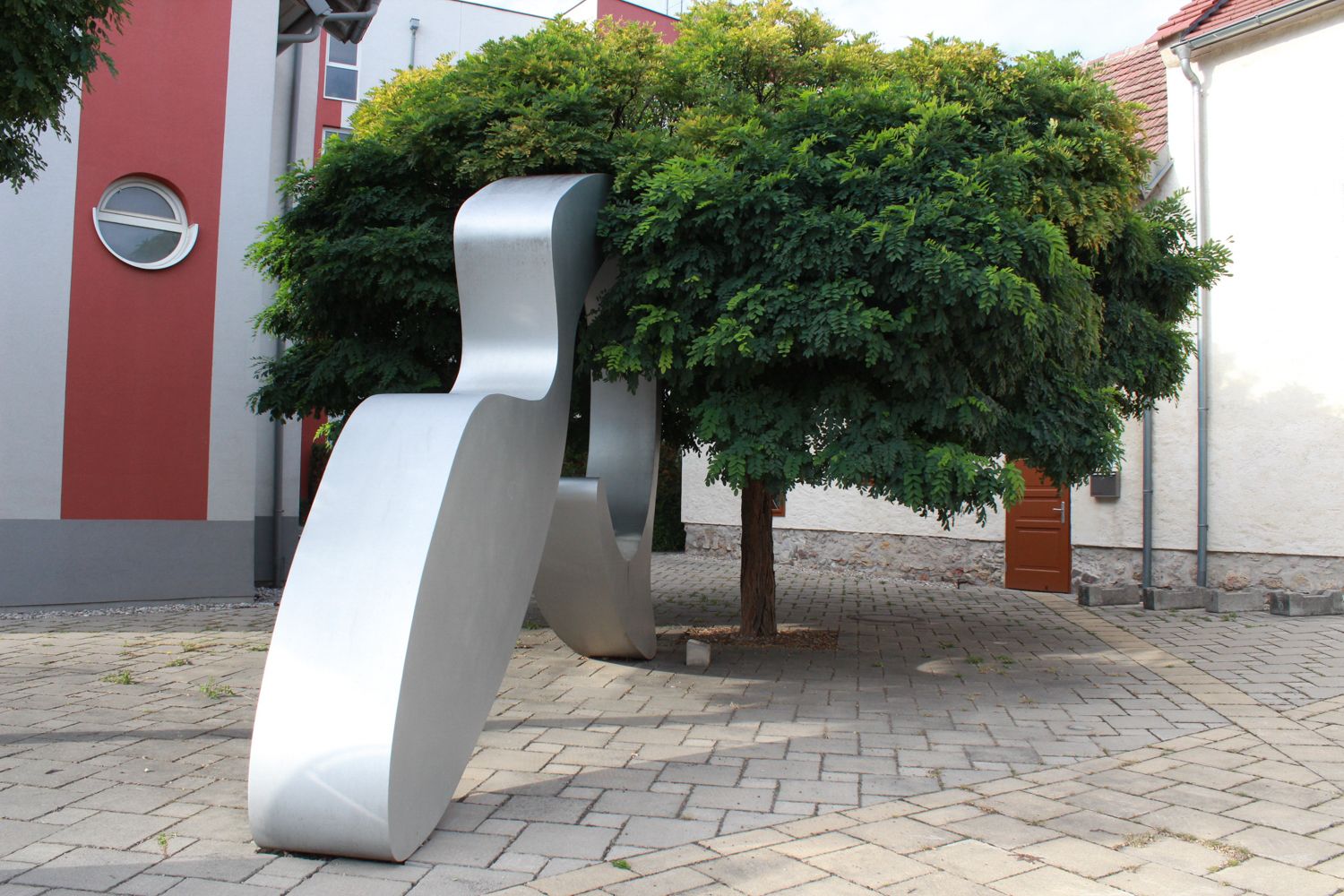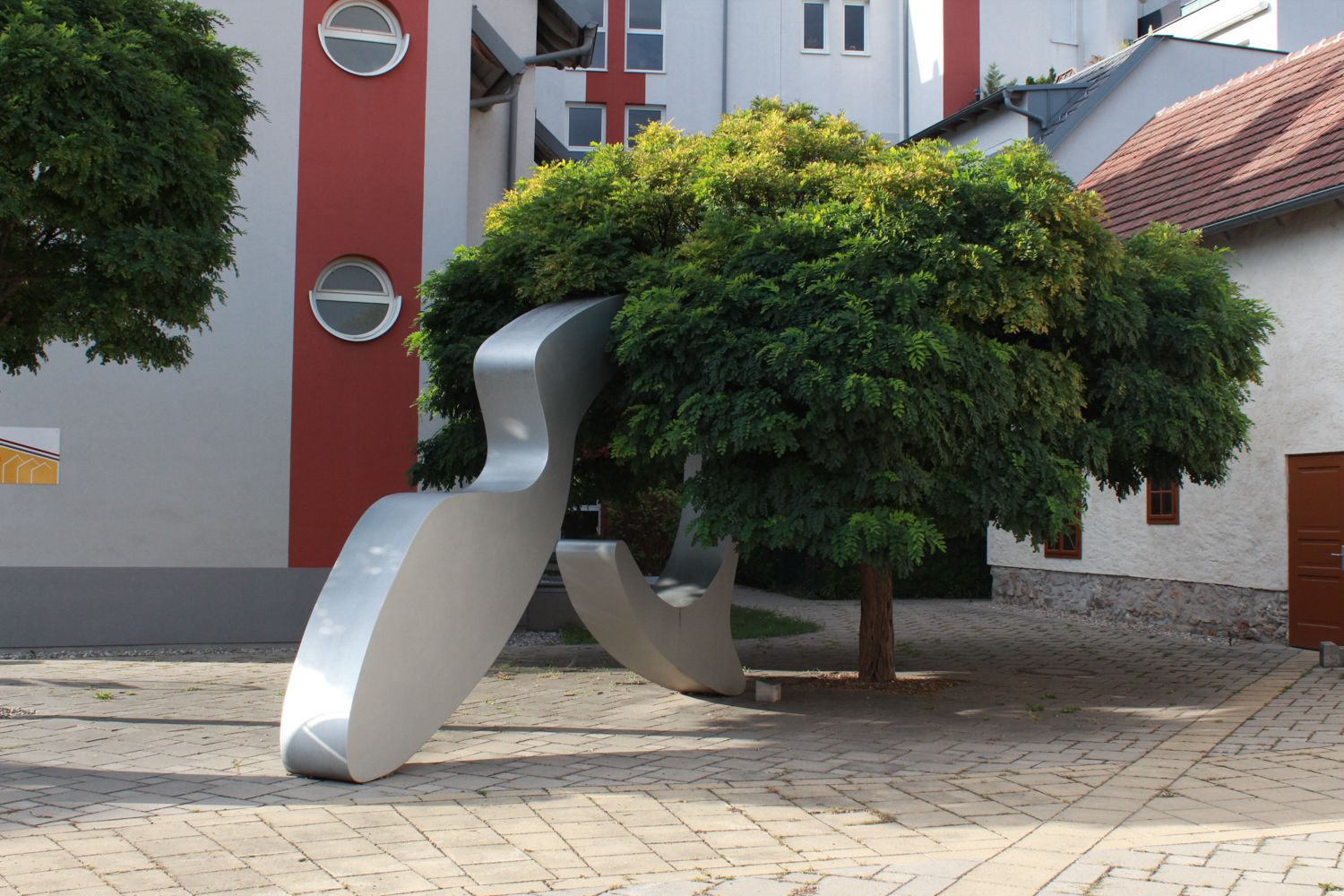Manfred Wakolbinger
:
Rendez-vous
Back
Information
The sculpture entitled Rendez-vous — an allusion to the communication betwen the work and the viewer — is part of a new work group by the artist entitled Placement. They are futuristic objects initially produced on the computer: elegant matte grey, pink or light blue lacquered metal constructions that mobilise the formal language of modernism.
Manfred Wakolbinger's sculpture Rendez-vous belongs to his new work group Placement. The group consists of futuristic objects initially created on the computer: elegant matte grey, pink or light blue lacquered metal constructions that mobilise the formal language of Modernism. Wakolbinger sends them on a voyage and makes them emerge in digital format on Greek islands, in the Californian desert or in the jungle of Bali. With an inexhaustible store of photographs of dream locations from all over the world, he mounts the science-fiction men on stilts among dancers and horses, in Caribbean ballet schools and inflatable hippodromes, he assembles them between ice skaters on the frozen-over gravel pit and camels at the foot of the Rif mountains. Eventually they sink into snow-covered fairytale forests. The artist looks for the ideal setting for his work: the artist as a location scout, as an usher for sculptures. The sculpture entitled Rendez-vous — an allusion to the communication between the work and the viewer — now stands on a small square in Leobersdorf, between the Halterhaus, the oldest building in the community, which is a museum today, and a new housing complex. On an interface between the old and the new, the site is the epitome of the kind of location that Manfred Wakolbinger would like for his sculptures. The givens of the location encounter artistic form in the context of an engagement with social and historical givens. The new morphology of the square also shapes everyday life. The conceptual starting point for the design could accordingly be found in the charged discourse that lies between the artistic claim to aesthetic autonomy and the objective of intervening in social reality.
(Brigitte Huck)
Images (4)




